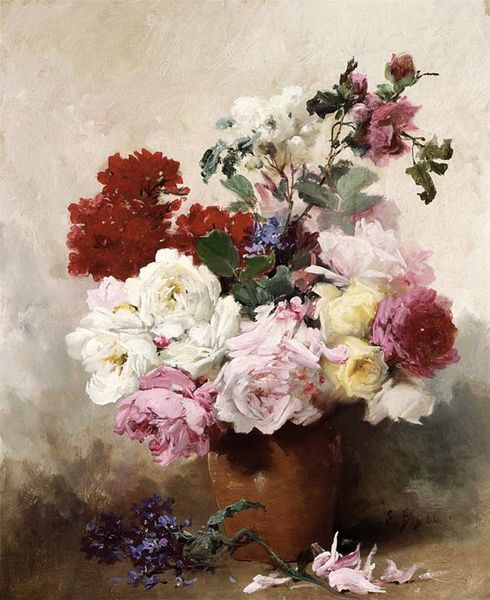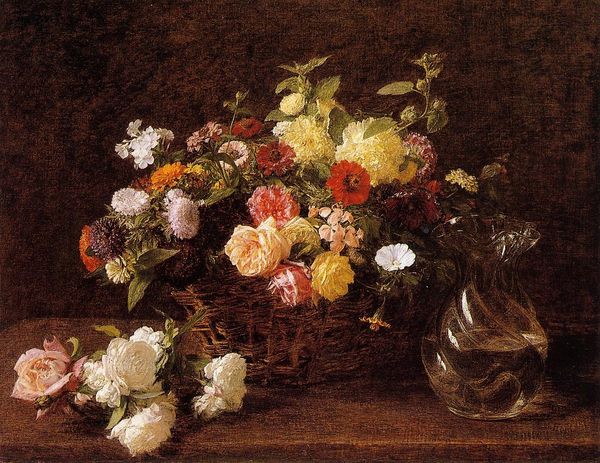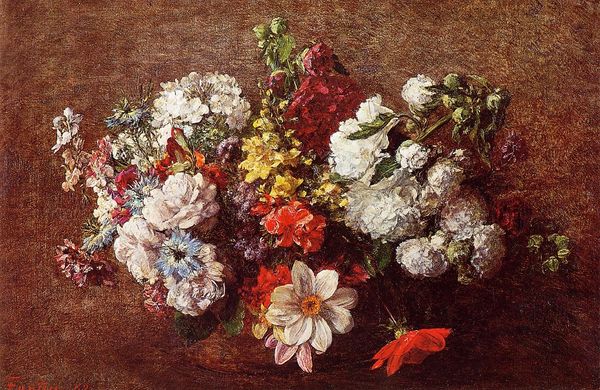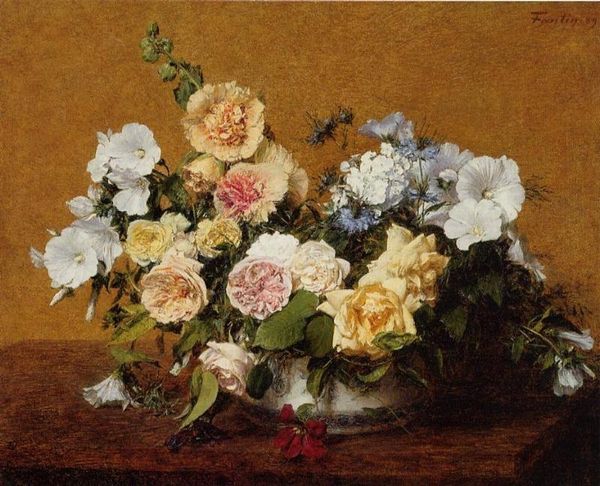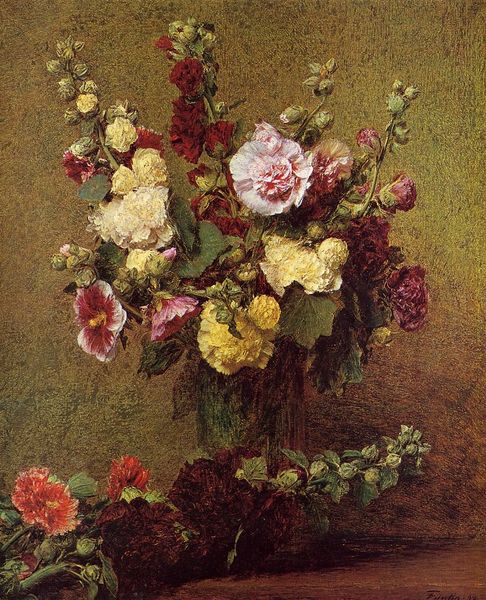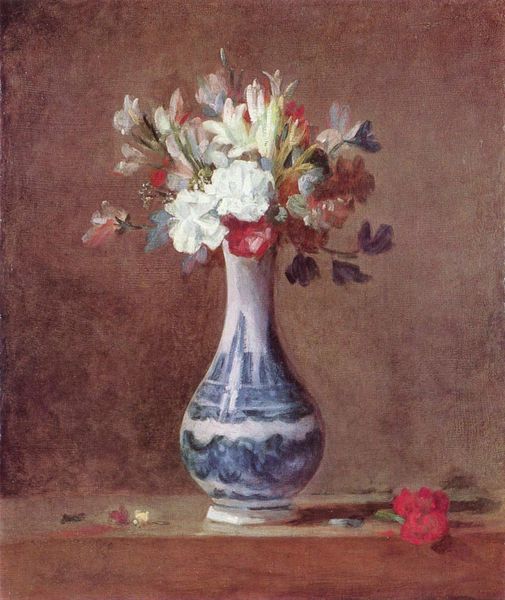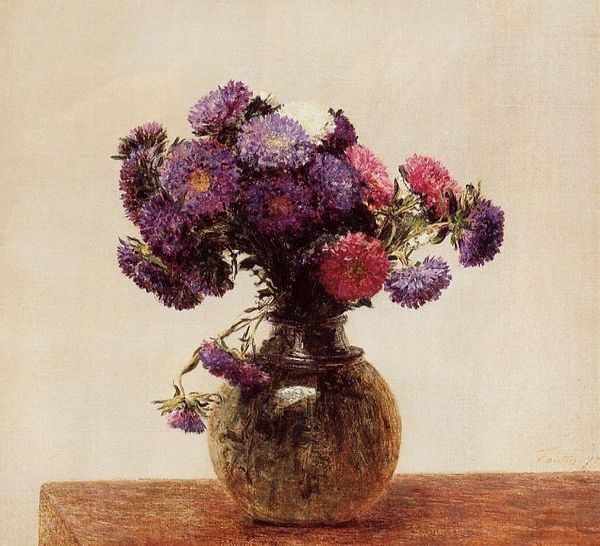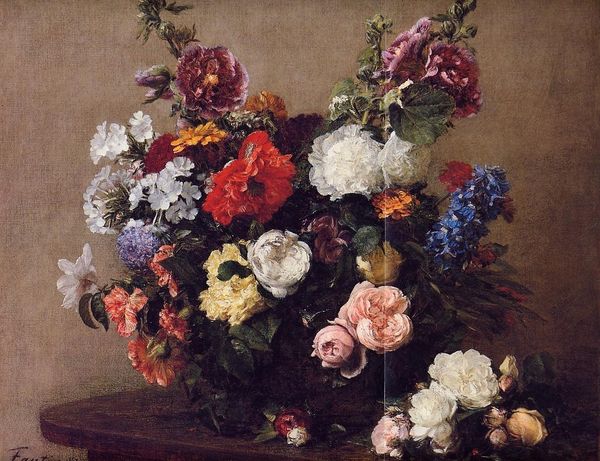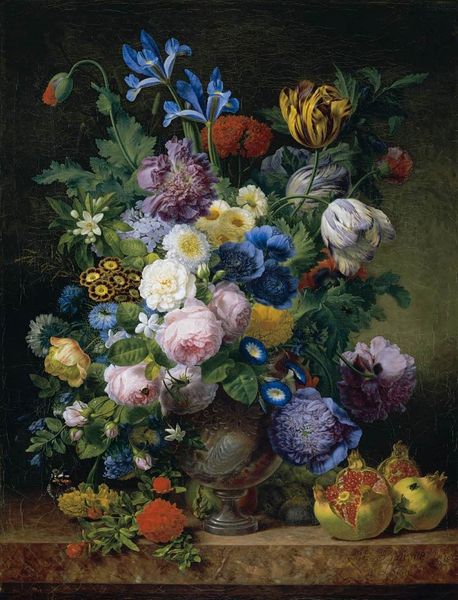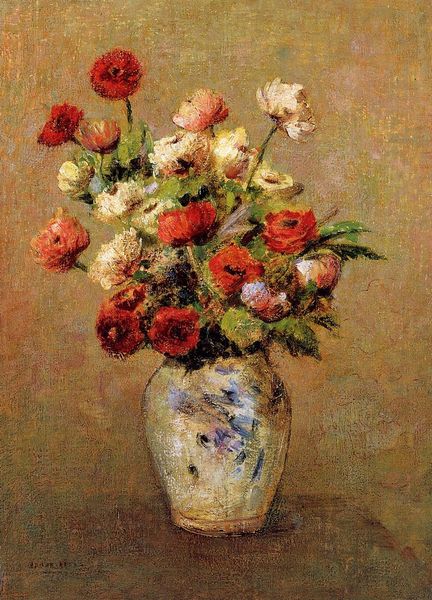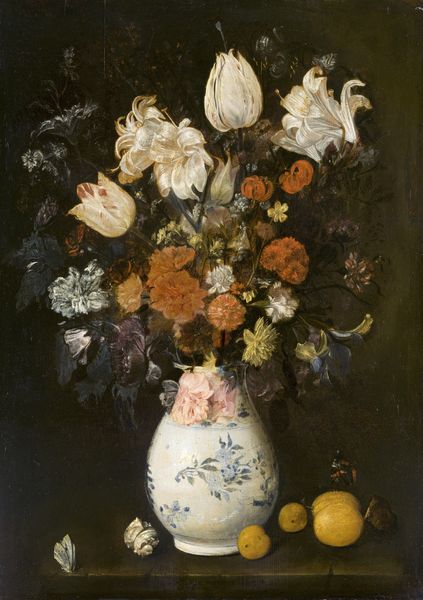
plein-air, oil-paint
#
impressionism
#
plein-air
#
oil-paint
#
oil painting
Copyright: Public domain
Editor: Here we have Renoir's "Spring Bouquet" from 1866, an oil painting currently residing at the Fogg Museum. It’s overwhelmingly abundant, isn’t it? All those flowers… It feels quite extravagant, but almost melancholic in tone. What story do you see within this composition? Curator: It's intriguing to view this through a socio-political lens. Consider that floral painting, even depictions of leisure, flourished during periods of significant social change and upheaval. Think of the opulence during the French Second Empire when this was painted. Was this display of transient beauty a quiet statement or distraction from a society on the brink? Editor: That’s a point I hadn’t considered. I was just swept away by the romantic style, thinking about Impressionism's beginnings... Curator: Right, but how were those beginnings shaped? Impressionism wasn't just about capturing fleeting moments. The Impressionists were consciously reacting against the established Salon system, which dictated what was deemed ‘acceptable’ art. Could a lavish floral arrangement like this have been a subtle jab at the elite's obsession with material possessions? Editor: A silent protest of sorts? I suppose that makes sense. And looking at it again, that blue-and-white vase has such prominence. It’s like a visual anchor. Curator: Precisely! Blue and white porcelain at this time would have evoked a certain internationalism and wealth due to trade with Asia. Its inclusion further layers our understanding of social status being both reinforced and questioned in Renoir's early works. Editor: I didn't consider that. I guess there is always a social conversation, even when things seem aesthetically simple. I'll definitely rethink my initial reaction to other works from this period too. Curator: Precisely. Examining art within the context of its creation reveals richer stories than purely visual analysis sometimes allows.
Comments
No comments
Be the first to comment and join the conversation on the ultimate creative platform.
